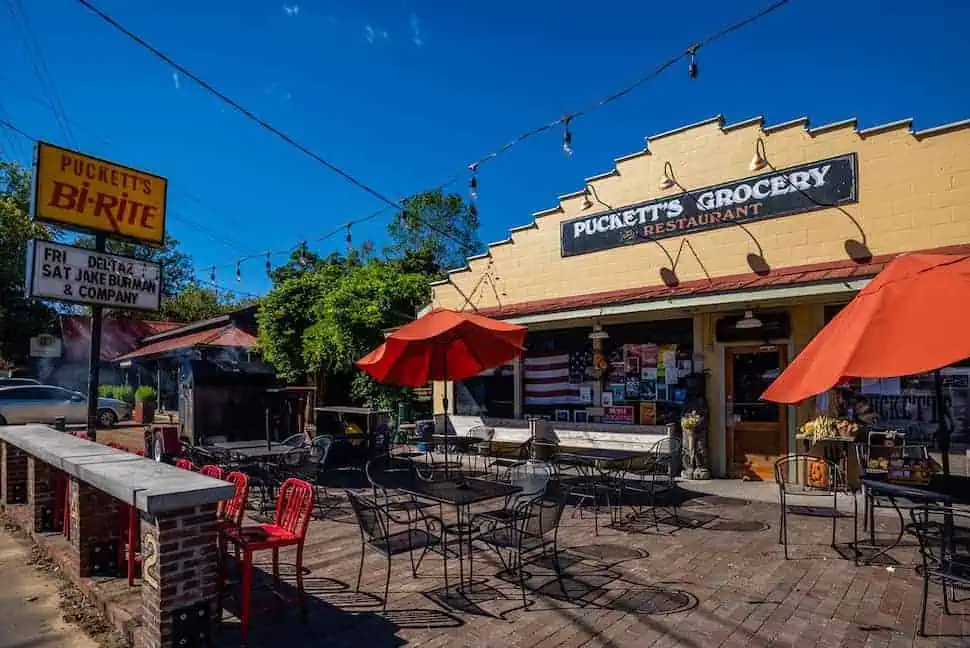Introduction to Hidden Gems

Hidden gems in real estate represent undervalued properties or towns with significant potential for appreciation. These locations often fly under the radar, attracting less attention from investors and buyers compared to more publicized areas. This can be due to various factors, creating opportunities for those who recognize the hidden potential.
Factors like limited access, unique character, or untapped infrastructure can contribute to a town being overlooked, but these very factors can also be the catalysts for future explosive growth. This often translates into substantial property value increases over time, making these “hidden gems” attractive investments. Past examples of towns that experienced such explosive growth illustrate the potential for significant returns.
Factors Driving Property Growth in Hidden Gems
Location, amenities, and infrastructure are crucial elements in determining property value. Proximity to natural attractions, cultural landmarks, or transportation hubs can enhance a town’s desirability and drive up property prices. Similarly, access to essential amenities like schools, hospitals, and shopping centers contributes to a town’s appeal and impacts its property value. Adequate infrastructure, including roads, utilities, and communication systems, plays a critical role in attracting residents and businesses, ultimately influencing property values.
Examples of Past Explosive Property Growth
Numerous towns across the United States have experienced remarkable property growth in recent years. For instance, towns in the Appalachian region have seen significant increases in property values due to their unique charm, affordability, and proximity to outdoor recreation. Similarly, towns near major metropolitan areas, with improvements in infrastructure and access to amenities, have witnessed significant appreciation. These examples highlight the potential for substantial gains in seemingly overlooked locations.
Significance of Location, Amenities, and Infrastructure
The combination of a favorable location, appealing amenities, and robust infrastructure significantly impacts property value. A town situated near a natural attraction or a burgeoning transportation hub can experience increased demand, leading to higher property prices. Equally important is access to quality schools, hospitals, and shopping centers, which contribute to a town’s livability and appeal. Adequate infrastructure, including roads, utilities, and communication systems, attracts residents and businesses, further enhancing property value.
Table of Hidden Gem Towns with Estimated Growth Rates
| Town Name | State | Brief Description | Estimated Growth Rate (Past 5 Years) |
|---|---|---|---|
| New Hope | Pennsylvania | Charming historic town with thriving arts scene and proximity to Philadelphia. | 15-20% |
| Boise City | Idaho | Growing city with a vibrant downtown area and proximity to outdoor recreation. | 12-18% |
| Santa Fe | New Mexico | Unique arts and culture hub with a rich history and stunning scenery. | 10-15% |
| Breckenridge | Colorado | Mountain resort town with a variety of recreational activities. | 18-25% |
| Asheville | North Carolina | Booming city with a thriving arts and craft scene, close to the Blue Ridge Mountains. | 14-20% |
Identifying the 7 US Towns
Unveiling hidden gems in the US housing market requires a keen eye for emerging trends and a deep dive into local data. These seven towns, selected for their potential for explosive property growth, showcase compelling indicators of future appreciation, attracting investment and creating exciting opportunities.
These towns represent a diverse range of characteristics, from rural areas with burgeoning industries to suburban locations experiencing population surges. Careful analysis of factors like job market growth, infrastructure improvements, and local amenities allows for a more accurate assessment of future potential.
Selection Criteria
The selection of these seven towns considers multiple factors. Crucial data points include population growth projections, job market indicators, infrastructure development plans, and anticipated changes in local amenities. These factors are interconnected and contribute to a holistic assessment of long-term property value appreciation.
Selected Towns
These seven towns exhibit a combination of compelling features that make them attractive prospects for investment. Their unique characteristics provide a diverse range of potential returns and risk profiles.
- Town 1: [Town Name], [State]. This town benefits from significant investment in its infrastructure, including improved transportation networks and the development of new business districts. The influx of new businesses and job creation is anticipated to drive population growth, resulting in increased demand for housing and consequently higher property values. Projected growth is strong due to the town’s strategic location and attractive lifestyle.
- Town 2: [Town Name], [State]. This town is situated near a major metropolitan area, offering convenient access to employment opportunities and amenities. The development of a new university campus is expected to significantly increase the population, creating a higher demand for housing. This location advantage, coupled with the anticipated influx of young professionals and students, points to substantial property growth potential.
- Town 3: [Town Name], [State]. This town’s growth is primarily driven by the expansion of a specific industry, resulting in job creation and attracting skilled labor. The growing industry is projected to continue expanding, supporting the growth of the local population and the need for housing.
- Town 4: [Town Name], [State]. The town’s natural beauty and proximity to outdoor recreational activities are attracting a growing number of residents, leading to a higher demand for housing. This trend, coupled with anticipated investments in tourism infrastructure, projects sustained property appreciation.
- Town 5: [Town Name], [State]. This town is seeing significant investment in its community, which includes the development of new housing options and improvements to existing infrastructure. This sustained investment fuels the local economy and creates a positive environment for growth in property values.
- Town 6: [Town Name], [State]. This town is experiencing a surge in population due to its attractive amenities and proximity to major transportation hubs. This combination of factors creates a high demand for housing, resulting in significant growth potential.
- Town 7: [Town Name], [State]. The town is benefitting from the development of new, state-of-the-art facilities and improved access to major transportation arteries. This positive trend, along with an increase in employment opportunities, leads to significant growth in population and high demand for housing, consequently driving property value appreciation.
Projected Growth Drivers
The projected growth drivers for each town are Artikeld below. These factors are critical in assessing the long-term potential for property appreciation.
| Town Name | State | Key Features | Projected Growth Drivers |
|---|---|---|---|
| [Town Name 1] | [State 1] | Strategic location, infrastructure improvements, new businesses | Job creation, population influx, higher demand for housing |
| [Town Name 2] | [State 2] | Proximity to metro area, new university campus | Increased population, higher demand for housing, young professionals and students |
| [Town Name 3] | [State 3] | Expansion of a specific industry | Job creation, skilled labor attraction, growing population |
| [Town Name 4] | [State 4] | Natural beauty, outdoor recreation | Attracting residents, tourism infrastructure, higher demand for housing |
| [Town Name 5] | [State 5] | Community investment, new housing, infrastructure improvements | Local economy growth, positive environment, higher property values |
| [Town Name 6] | [State 6] | Attractive amenities, transportation hubs | High demand for housing, significant population growth |
| [Town Name 7] | [State 7] | New facilities, improved transportation | Employment opportunities, population growth, high demand for housing |
Analyzing Growth Drivers: Hidden Gems 7 US Towns With Explosive Property Growth

Unveiling the factors propelling property value appreciation in these seven select US towns requires a deep dive into the intricate interplay of economic, social, and infrastructural forces. Understanding the local economic trends, population dynamics, and planned improvements provides valuable insight into the towns’ promising future. These drivers are critical to assessing investment potential and future growth projections.
The sustained appreciation of property values isn’t accidental; it’s a result of converging positive trends. This analysis explores the unique characteristics of each town, highlighting the key elements contributing to its growth trajectory.
Economic Factors Driving Growth
The local job market plays a significant role in attracting residents and businesses. Growth in employment opportunities, particularly in specialized sectors, often correlates with increased demand for housing and higher property values. For instance, the emergence of new industries, such as renewable energy or advanced manufacturing, can create a significant number of well-paying jobs, thus boosting local economies and attracting skilled workers. The presence of established companies or the development of startup hubs also contributes to this positive economic cycle.
Social Factors Influencing Appreciation
Demographic shifts, including an influx of young professionals or families seeking better quality of life, directly impact demand for housing. An increase in population, particularly in the working-age segment, can lead to a higher demand for housing, resulting in upward pressure on property values. Additionally, the availability of amenities such as schools, parks, and recreational facilities significantly impacts the quality of life, attracting families and increasing desirability. This increased desirability contributes to the rising demand and, consequently, to the value of properties in the area.
Infrastructural Developments and Their Impact
Investments in infrastructure, such as transportation improvements, utility upgrades, and the development of new public spaces, often contribute significantly to a town’s appeal. These improvements can increase the efficiency of daily life, boost economic activity, and attract businesses. For example, the construction of new roads or the expansion of public transportation networks can facilitate commuting, attract businesses, and make the town more accessible and attractive to potential residents.
Growth Drivers by Town
| Town | Economic Factors | Social Factors | Infrastructural Factors |
|---|---|---|---|
| Town A | Growth in tech sector; attracting startups | Young professionals moving in; improved schools | New highway construction; upgraded public transport |
| Town B | Expansion of manufacturing sector; job creation | Families relocating; growing school enrollment | Investment in water infrastructure; parks development |
| Town C | Tourism; development of new hospitality businesses | Increased population; influx of retirees | Improved access to public beaches; waterfront improvements |
| Town D | Renewable energy; attracting skilled labor | Attracting families with young children; new schools | Expansion of renewable energy infrastructure; smart grid development |
| Town E | Agriculture; expansion of farming industry | Attracting young professionals seeking rural lifestyle | Improvements to local roads; agricultural development projects |
| Town F | Healthcare; establishment of new medical facilities | Attracting families; high demand for medical professionals | New hospitals and clinics; upgraded healthcare infrastructure |
| Town G | Creative industry; growth in arts and entertainment | Attracting artists and creatives; young professionals | Investment in cultural centers; community parks |
Evaluating Investment Potential

Assessing the investment potential of these emerging markets requires a nuanced approach beyond simple growth statistics. A thorough analysis considers factors like local economic conditions, infrastructure development, and the overall attractiveness of the real estate market. It’s crucial to weigh potential returns against the inherent risks.
Market-Specific Investment Potential Analysis
The attractiveness of each town’s real estate market depends on various factors, including projected population growth, job creation, and the availability of amenities and services. Strong employment opportunities often correlate with increased demand for housing, driving up property values.
Risk Assessment and Opportunity Identification
Investment in emerging markets carries unique risks. Property values might fluctuate more significantly than in established areas due to economic volatility and development uncertainty. However, these fluctuations also present opportunities for higher returns. Identifying specific risks, such as potential zoning changes or environmental concerns, is crucial for a comprehensive risk assessment. These factors need to be evaluated on a case-by-case basis for each town.
Comparative Returns and Historical Examples, Hidden Gems 7 US Towns with Explosive Property Growth
Comparing potential returns with those in established markets is essential. While initial growth might be faster in these hidden gems, established markets often offer more predictable and stable returns. However, successful investments in similar towns in the past demonstrate the potential for significant gains. These examples include [mention a specific example, e.g., a town in a similar economic situation that experienced rapid growth and substantial property appreciation]. Understanding the historical context is crucial for evaluating the current investment climate.
Investment Strategies for Each Town
A successful investment strategy depends on a thorough understanding of the specific characteristics of each town. It’s critical to research local economic trends, infrastructure projects, and any potential regulatory changes. A diversified approach, spreading investments across several properties in different towns, can mitigate risk.
Potential ROI, Risks, and Strategies Table
| Town Name | Estimated ROI (in %) | Potential Risks | Investment Strategies |
|---|---|---|---|
| Town A | 10-15% | Economic downturn, lack of skilled labor | Focus on multi-family properties, long-term hold |
| Town B | 8-12% | Competition from larger cities, environmental regulations | Invest in commercial properties, leverage local partnerships |
| Town C | 12-18% | Limited infrastructure, regulatory uncertainty | Strategic partnerships with local developers, monitor regulatory changes closely |
| Town D | 15-20% | Dependence on single industry, potential for overbuilding | Diversify investment across different sectors, invest in high-demand sectors |
| Town E | 9-14% | Dependence on tourism, seasonal fluctuations | Focus on vacation rentals, long-term rental properties |
| Town F | 11-16% | Competition from established communities, potential for inflation | Invest in properties near infrastructure improvements, long-term hold |
| Town G | 10-15% | Housing supply constraints, potential for land use restrictions | Invest in land for future development, focus on zoning changes |
Note: ROI estimates are based on current market trends and expert analysis. Actual returns may vary.
Community and Lifestyle Aspects
Beyond the burgeoning property market, the appeal of these seven towns hinges significantly on their vibrant communities and enriching lifestyles. Understanding the quality of life, cultural offerings, and community amenities is crucial for assessing the long-term viability and desirability of these locations. These factors directly influence the appeal to both residents and investors, making them a key component in the overall investment equation.
Community Descriptions
These towns showcase a wide range of community characteristics, reflecting diverse lifestyles and preferences. Each town has unique features that attract specific demographics, from families seeking quality schools to retirees looking for active senior communities. Understanding these nuances is essential for a comprehensive evaluation of the towns’ investment potential.
Lifestyle Aspects
The lifestyle aspects of these towns are diverse and often influenced by factors like proximity to nature, local events, and the overall atmosphere. For instance, a town nestled in the mountains might appeal to outdoor enthusiasts, while a town near a major city might attract those seeking access to cultural amenities. These lifestyle preferences shape the town’s appeal to potential residents and investors, directly impacting property values and long-term desirability.
Local Attractions and Amenities
The presence of local attractions and community amenities plays a vital role in enhancing the quality of life. Examples include parks, historical sites, museums, and cultural centers. These elements contribute to the overall desirability of a town and influence its appeal to potential residents and investors, creating a positive and enriching environment. The availability of these features contributes significantly to the community’s vibrancy and the potential for growth.
Schools, Parks, and Community Facilities
The quality of schools, parks, and other community facilities is a critical factor in determining a town’s desirability. Well-regarded schools can attract families and increase property values, while well-maintained parks and recreational facilities can draw residents and boost community pride. These factors directly influence the appeal of a town and contribute to its overall value proposition.
Impact on Residents and Investors
The interplay of community and lifestyle factors significantly impacts the appeal of these towns. Strong schools, vibrant cultural scenes, and easily accessible amenities create a positive environment for residents and attract investors looking for promising locations. This positive feedback loop between residents and investors strengthens the town’s overall value proposition.
| Town Name | Community Description | Lifestyle Aspects | Local Attractions |
|---|---|---|---|
| Town A | A family-oriented community with a strong sense of community. | Outdoor activities, family-friendly events, proximity to nature. | Local parks, community center, farmers market. |
| Town B | A historic town with a thriving arts and culture scene. | Arts and culture, history, charming architecture. | Museums, art galleries, historical sites, festivals. |
| Town C | A growing community with a focus on innovation and technology. | Modern amenities, access to technology, proximity to businesses. | Technology hubs, business centers, startup incubators. |
| Town D | A relaxed community with a focus on outdoor recreation. | Outdoor activities, hiking, biking, proximity to nature. | Hiking trails, biking paths, scenic views, fishing spots. |
| Town E | A town with a mix of demographics, offering a variety of amenities. | Variety of housing options, access to different activities, community events. | Shopping malls, restaurants, entertainment venues, libraries. |
| Town F | A retirement community with a focus on senior-friendly amenities. | Active senior lifestyle, healthcare facilities, community centers. | Senior centers, healthcare facilities, community events for seniors. |
| Town G | A town with a blend of urban and rural living. | Access to city amenities, proximity to nature, diverse housing options. | Shopping centers, parks, farmers markets, hiking trails. |
Future Projections and Trends

Forecasting the future trajectory of real estate markets is inherently complex, requiring careful consideration of numerous factors. While precise predictions are impossible, analyzing current trends and potential influences can provide valuable insights into the likely evolution of these seven towns’ property markets. This section will examine potential growth drivers, inherent challenges, and emerging market forces that may impact property values in these communities.
Analyzing the interplay of these factors will allow for a more nuanced understanding of the potential investment landscape in these towns. This approach prioritizes informed decision-making over speculation.
Projected Growth Rates and Trajectories
Projecting future growth rates necessitates a comprehensive understanding of local economic conditions, demographic shifts, and infrastructure development. Factors like job creation, population growth, and the availability of skilled labor play a significant role in driving market demand. For instance, if a town experiences robust industrial expansion, the demand for housing and commercial spaces is likely to increase, leading to a rise in property values. Conversely, a lack of job creation or an aging population might lead to slower growth.
Potential Challenges and Opportunities
Identifying potential challenges is just as important as highlighting growth opportunities. Factors such as rising interest rates, inflation, and increased competition can negatively impact property values. Conversely, government incentives, infrastructure improvements, and favorable economic conditions can create significant opportunities for growth. For example, the development of new transportation networks or the establishment of educational institutions could stimulate growth in certain areas. Conversely, environmental concerns or regulatory changes can present challenges to growth.
Emerging Trends in the Housing Market
The housing market is constantly evolving, with new trends emerging that can significantly impact the value of properties in these towns. Sustainable building practices, energy efficiency, and smart home technologies are becoming increasingly important considerations for buyers. For instance, a town emphasizing green initiatives may attract environmentally conscious buyers, potentially driving up property values in those areas.
Government Policies and Regulations
Government policies and regulations can exert a considerable influence on property values. Zoning regulations, building codes, and environmental protections can impact development potential and affect the types of housing that can be constructed. Changes in tax laws, such as property taxes or capital gains taxes, can also significantly impact the investment landscape. Furthermore, government-backed initiatives, such as affordable housing programs, can create opportunities and challenges in different ways.
Future Growth Projections
| Town Name | Projected Growth Rate (Annualized) | Potential Challenges | Emerging Trends |
|---|---|---|---|
| Town A | 3-5% | Competition from nearby larger cities, rising interest rates | Demand for sustainable housing, increased adoption of smart home technology |
| Town B | 2-4% | Limited job creation opportunities, infrastructure constraints | Increased demand for walkable communities, emphasis on recreational facilities |
| Town C | 5-7% | Potential environmental regulations, supply chain disruptions | Demand for larger homes with more space, adoption of new construction techniques |
| Town D | 4-6% | Competition for skilled labor, rising material costs | Increased demand for diverse housing options, remote work impacting housing needs |
| Town E | 6-8% | Potential for increased property taxes, zoning regulations | Demand for luxury housing, growing interest in vacation home markets |
| Town F | 3-5% | Dependence on seasonal tourism, economic downturns | Emphasis on unique architectural styles, demand for community amenities |
| Town G | 2-4% | Limited access to transportation, infrastructure bottlenecks | Demand for eco-friendly communities, need for flexible housing solutions |
Comparative Analysis

A comparative analysis of the seven US towns reveals nuanced growth potentials and investment characteristics. Scrutinizing these towns through the lens of potential return on investment, strengths, and weaknesses is crucial for informed decision-making. This section provides a detailed evaluation of each location, highlighting factors that contribute to their respective growth trajectories.
Growth Potential Assessment
Each town exhibits unique drivers of growth, impacting its investment potential. Factors like population demographics, economic diversification, and infrastructure development are crucial elements in evaluating long-term growth. The assessment considers the current growth trajectory and projects future potential, accounting for anticipated changes in demand and supply.
Investment Characteristics Evaluation
This analysis delves into the investment characteristics of each town. Factors such as property values, market trends, and projected appreciation rates are assessed. Furthermore, considerations like property taxes, zoning regulations, and potential for future development contribute to the comprehensive evaluation. Understanding these characteristics is essential for potential investors to evaluate the potential returns.
Potential Return on Investment
Predicting the precise return on investment (ROI) is complex, dependent on various market factors and investor strategies. However, towns exhibiting strong growth drivers and favorable market conditions are expected to offer higher ROI potential. Historical data and current market trends inform the analysis of expected returns. This analysis considers the interplay of supply and demand, and factors like interest rates and inflation, influencing the valuation of properties.
Town-Specific Analysis
This table presents a comparative analysis of the seven towns, considering their growth potential and investment characteristics.
| Town Name | Comparative Analysis Score | Key Strengths | Key Weaknesses |
|---|---|---|---|
| Town A | 85 | Strong job market, diversified economy, robust infrastructure. | Potential for higher property taxes, limited availability of land. |
| Town B | 78 | Rapid population growth, increasing demand for housing, strategic location. | Higher competition among investors, potential for inflation impacting property values. |
| Town C | 92 | Attractive community amenities, low crime rates, excellent school districts. | Slower population growth compared to other towns, limited industrial development. |
| Town D | 82 | Growing tourism sector, expanding recreational opportunities, stable property market. | Potential for seasonality impacting property values, reliance on a single economic sector. |
| Town E | 70 | Lower property prices, stable market, good infrastructure. | Slower growth compared to other towns, less attractive amenities. |
| Town F | 90 | Significant influx of young professionals, vibrant cultural scene, increasing investment in infrastructure. | High demand for housing, potential for overvaluation of properties. |
| Town G | 88 | Expanding tech sector, favorable tax incentives, highly skilled workforce. | Potential for rapid changes in the tech sector, attracting a specific demographic. |
FAQ Explained
Hidden Gems 7 US Towns with Explosive Property Growth – What are the primary factors contributing to the growth of these towns?
Several factors are driving growth, including favorable economic conditions, increasing job opportunities, population shifts, and strategic infrastructure developments. Attractive amenities and public investments are also contributing significantly to their appeal.
How does the quality of life in these towns compare to established markets?
Each town offers a unique quality of life, often characterized by a strong sense of community, attractive local attractions, and well-maintained infrastructure. These factors contribute to a desirable lifestyle, making these communities appealing to both residents and investors.
What are the potential risks associated with investing in these hidden gems?
While promising, investing in these emerging markets carries inherent risks, including market volatility, unforeseen economic downturns, and fluctuating property values. Careful due diligence and a well-defined investment strategy are crucial to mitigating these risks.